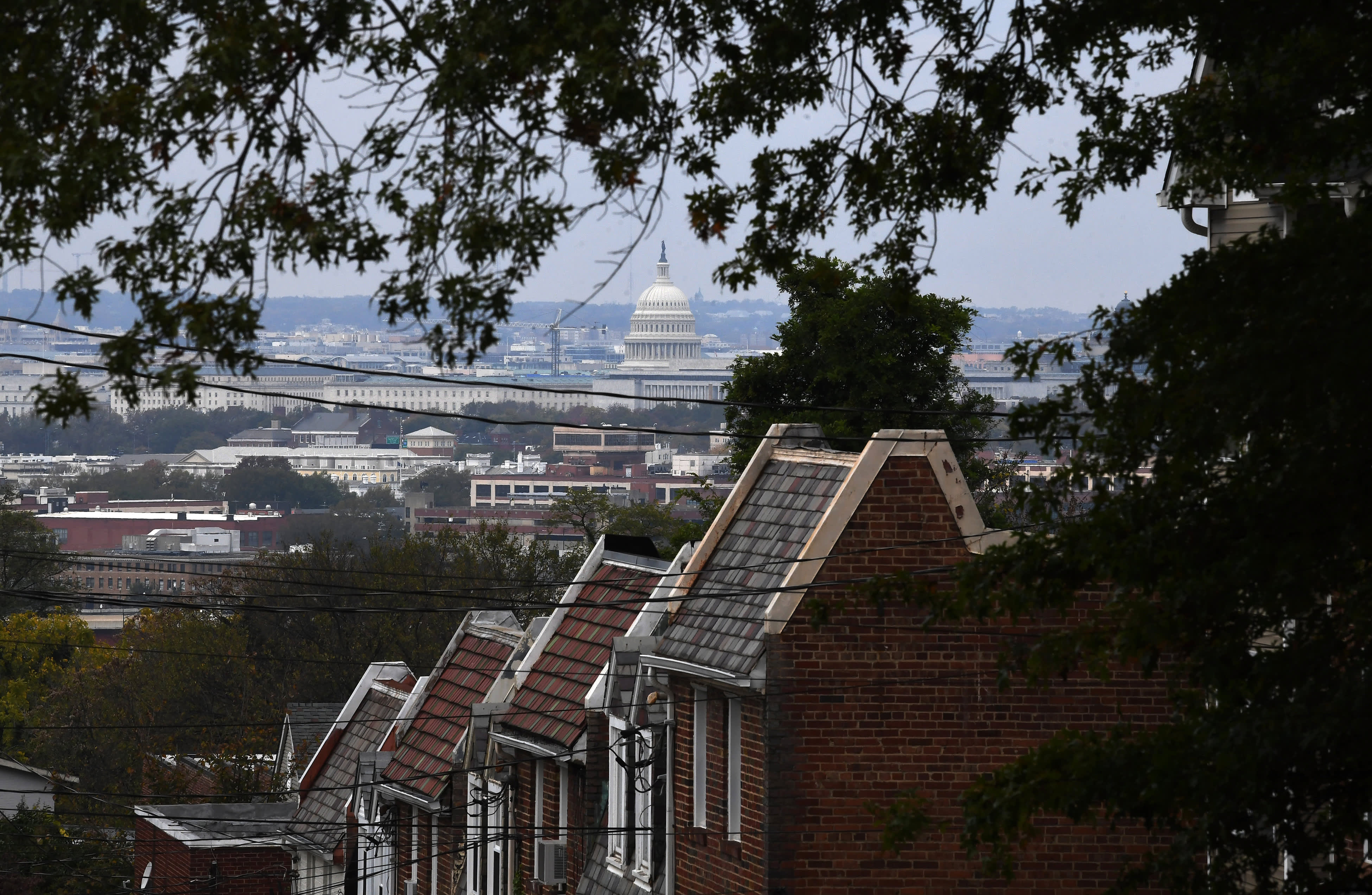Products You May Like
The Covid-19 pandemic caused unexpected financial shocks for many Americans, particularly low-income service workers who were at higher risk of losing their jobs.
The emergency situation prompted four community-based organizations to develop a guaranteed income program for certain residents of Washington, D.C.
Starting in July 2020, the program gave $5,500 to participants in the capital’s Ward 8, an area that was disproportionately hit by the effects of the pandemic.
Recipients could opt to receive the money either in one lump sum or five monthly payments of approximately $1,100 each.
The program, named THRIVE East of the River, continued through January of this year and included 590 households.
More from Personal Finance:
Your 2021 child care costs could mean an $8,000 tax credit
Petition for $18 minimum wage gains signatures in California
Families struggle without monthly child tax credit payments
Those participating typically had less than $25,000 in income. About 98% of the participants are Black and 85% are women.
Even prior to the pandemic, the residents of Ward 8 struggled with food insecurity, lack of access to quality health care and high housing costs. The area has also struggled with legacy effects of segregation and disinvestment in majority Black neighborhoods.
For example, for many years Ward 8 did not have a grocery store until one opened in 1998.
When the community organizations began to enroll area residents with the promise of no strings to the $5,500, they were met with a mixture of mistrust and joy.
“At first, it was like, ‘We can’t trust this.’ And then the second reaction is, ‘Somebody cares,'” said Mary Bogle, principal research associate at the Metropolitan Housing and Communities Policy Center at the Urban Institute.
The THRIVE program is the latest of many guaranteed income programs to pop up in cities and local communities across the country. Many of the programs are inspired by Dr. Martin Luther King, Jr., who advocated for direct cash support as a way to combat poverty.
The proliferation of these experiments comes as the federal government authorized an unprecedented level of financial support for individuals and families during the pandemic. That included enhanced federal unemployment benefits and three economic impact payments.
While that aid has expired, lawmakers are currently weighing whether or not to extend the enhanced child tax credit, which let parents receive monthly checks of up to $300 per month last year.
The Urban Institute, a supporting partner in the THRIVE program, published a research report on the results of the experiment this week.
More than half of the participants spent a substantial amount of the money they received on housing. Food was the second spending priority, the research found.
More than 30% of those who enrolled in the program had lost their jobs because of the pandemic. At the same time, 32% of participants said they were working for pay when they enrolled in the program, while 45% said at least one adult in their household was gainfully employed.
While more than 30% of the program’s participants were eligible for unemployment benefits due to pandemic-related job losses, only 22% applied for those benefits. Of those who applied, less than half received any aid.
The THRIVE program provided services to help participants apply for the federal benefits for which they were due.
More than half of the participants who applied for unemployment benefits said the process was either somewhat or extremely difficult.
Some may not have applied because they were not aware they were eligible, Bogle said.
“Folks who live in marginalized communities especially and who are low income tend to be the hardest to reach with public benefits,” Bogle said. “The systems do not have good mechanisms for reaching them.”
Individuals and families who are receiving government benefits, through programs like the Supplemental Nutrition Assistance Program (SNAP) or housing subsidies, often have to fulfill multiple requirements in order to access those resources.
Moreover, the aid often comes in the form of vouchers, rather than cash.
The results from the THRIVE program show that low-income individuals and families can responsibly decide how to allocate direct payments for their needs, Bogle said.
Ultimately, the goal of this research and other guaranteed income experiments is to inspire changes to federal policies that often hamstring low-income Americans and made it difficult for them to get out of poverty, she said.
“Our safety net is very judgmental, but it does not show a lot of good judgement,” Bogle said.
“If we designed a safety net or a system to help people in this country that was based on evidence, we would not have the systems the way they look now.”
